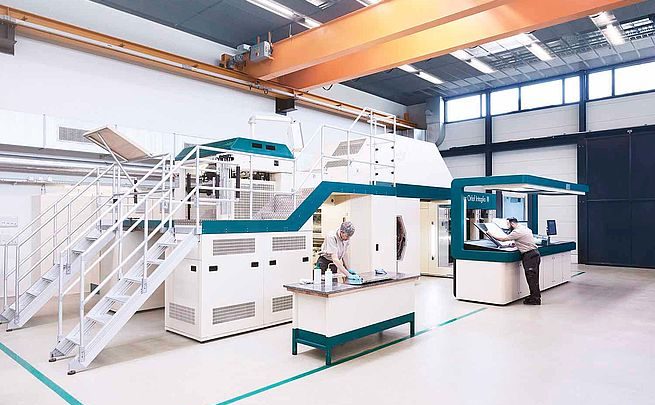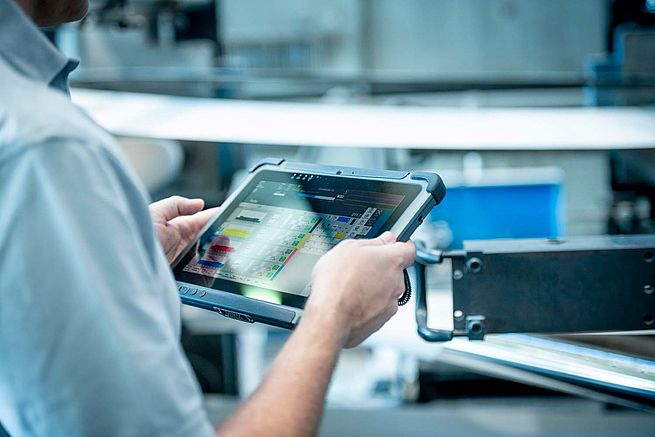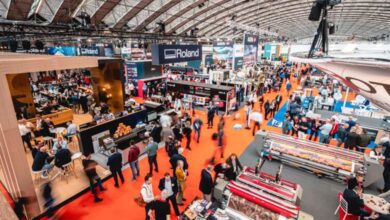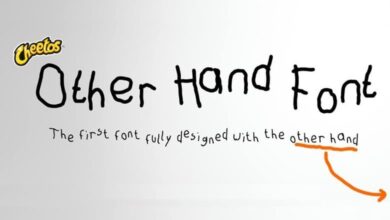Koenig & Bauer to Target Group Revenue of Around €1.5 Billion

With the progress achieved in the structurally growing and less cyclical packaging printing, the Koenig & Bauer group made further advances in its strategically aligning towards sustainable profitable growth. CEO Claus Bolza-Schünemann: “Driven by a record order intake, we have been able to widen our share of the global flexible packaging printing market to 9%. Revenue in marking and coding has risen by around 50% in the last three years. Since the acquisition of flatbed die-cutter business in 2016, revenue in this business field has climbed by more than 50%. The entry into the market for folder gluers and the planned joint venture with inkjet pioneer Durst for folding carton and corrugated printing are further milestones.”

CFO Mathias Dähn: “Pleasing revenue and earnings potential can arise with our RotaJET digital printing platform for decor and flexible packaging printing following a greater substitution of the hitherto standard analogue printing processes and an increase in the internally-sourced production of decoration papers in the furniture and flooring industry. After a comprehensive evaluation process, the renowned packaging group Tetra Pak has opted for our large-format RotaJET for full-colour digital printing of beverage carton packaging. We have received two more RotaJET orders for digital decor printing.”
Group EBIT climbed from €81.4m in the previous year to €87.4m despite some adverse circumstances in the availability of parts and market conditions. With the increase in its EBIT margin from 6.7% to 7.1%, Koenig & Bauer achieved the target defined for 2018 of around 7%. CFO Mathias Dähn: “On the basis of an EBIT margin adjusted for special items of 5.4% in 2016, we are aiming for an annual improvement of 0.7% in this margin to around 9% by 2021 assuming linear execution of the group projects for boosting earnings by €70m. This translates into a target of 6.8% for 2018, which we exceeded substantially with a margin of 7.1%.”

The previously announced shifts of machine deliveries into 2019 as a result of bottlenecks in the parts availability burdened the achievement of our revenue target. At €1,226m, group revenue was only slightly up on the previous year of €1,217.6m. Koenig & Bauer had been targeting organic revenue growth of around 4% for 2018. With order intake coming to €1,222m (previous year: €1,266.3m), order backlog rose to €610.9m (previous year: €606.2m).
High tax expenses resulting from the consumption of deferred tax assets on loss carry-forwards left traces on net profit. At €64m, group net profit (previous year: €81.1m) translates into earnings per share of €3.86 in 2018 (2017: €4.91). “Thanks to the good group net profit and the retained profit generated by the holding company Koenig & Bauer AG, we are able to continue our dividend policy with a distribution rate at the upper end of the target corridor of between 15% and 35% of group net profit,” said CEO Claus Bolza-Schünemann. Accordingly, the Management Board and the Supervisory Board will be asking the shareholders to approve a dividend of €1 per share at the annual general meeting on 22 May 2019. This is equivalent to a dividend ratio of 25.9% of group net profit and a dividend yield of 2.7% on the basis of the closing price of the share in 2018.
At €613m, order intake in the Sheetfed segment was below the previous year’s figure of €656.2m. While the project situation is good, bottlenecks in the availability of parts dampened new business due to longer delivery times. The situation with regard to parts also caused revenue to drop to €647.4m, down on the previous year’s figure of €660.2m. This is also reflected in EBIT, which fell to €36.5m, compared with €37.5m in the previous year. With an EBIT margin of 5.6%, Koenig & Bauer was able to maintain the level achieved (2017: 5.7%) despite the continued price pressure being exerted by competitors. The lower order backlog of €199.1m compared with the previous year (€233.5m) was followed by good order intake at the start of 2019.
Orders in the Digital & Web segment rose from €139.6m to €167.6m, primarily due to the record order intake for flexible packaging printing, which reflects the initial success of the realignment of this business field. Whereas the demand for the HP press for digital pre-prints of corrugated liners was subdued, several presses were sold from the RotaJET digital printing platform for decor and flexible packaging printing, substantially exceeding the previous year’s figure. At €150.7m, revenue was slightly down on the previous year (€154.2m). Together with market-entry and growth-related expenses for digital, flexible packaging and corrugated board printing, the lower revenue exerted pressure on EBIT. Accordingly, EBIT fell to –€10.5m, compared with –€4.3m in the previous year. The order backlog widened from €61.5m to €78.4m at the end of 2018.
Given large orders and with project business remaining generally favourable, volatility remained high in security printing due to often lengthy order placement and the domination of large-scale projects. Further market share was gained in marking and coding, while the market position in the tobacco and tyre industry in particular was expanded significantly. Lower orders for metal and glass/hollow container decorating presses caused order intake in the Special segment to drop to €502.4m, down from €533.7m in the previous year. Revenue climbed from €467.9m to €490.5m thanks to growth in security printing, marking and coding and glass/hollow container decorating. EBIT came to €49.7m in 2018, down from €53.7m in the previous year. With the order backlog increasing to €344.6m (2017: €324m) at the end of December, good capacity utilisation is assured over the next few months.
Cash flows from operating activities was particularly strong, coming to €66.3m, up from €23.8m in the previous year. The substantial improvement in free cash flow to–€19.5m compared with the previous year (–€59.6m) was burdened by high investments and the final payment instalment for the external funding of a part of the pension provisions. Together with the solid internal liquidity, the syndicated long-term credit facilities give Koenig & Bauer a strong and stable financial basis. The strong balance sheet structure was additionally enhanced with the increase in the equity ratio to 38.5%.
CFO Mathias Dähn: “The order backlog, which rose to €610.9m at the end of 2018, together with the good order development in January and February 2019 gives us good forward visibility across the entire group until the summer of 2019 and, in security printing with its good order situation, until 2020. The printing production output of our customers all around the world is growing, especially in packaging and banknote printing. With the exception of the packaging printers in China producing for export markets, our order intake has so far largely shrugged off the effects of the recent political and economic developments. In the absence of any material deterioration in the underlying conditions over the next few months, we target organic growth of up to 4% in group revenue and an EBIT margin of around 6% in 2019. This includes the annual 0.7% improvement in margins on group projects to boost earnings as well as the margin impact from the growth offensive 2023, the cumulative costs of which we expect to reach around €50m for 2019 to 2021 with a heavier load in the first year. In the event of a slowdown in the economy, we cannot rule out an up to 2 percentage points lower EBIT.”
CEO Claus Bolza-Schünemann: “With our growth offensive 2023, we want to actively exploit the currently available market opportunities in the cardboard, corrugated board, flexible packaging, 2-piece can, marking and coding, glass direct and decor printing as well as in postpress to achieve sustained profitable growth. The impact of volatile security printing will be reduced by higher packaging share of group revenue. For web offset presses for newspaper and commercial printing, we expect a further business decline. With all our initiatives and projects, we are targeting to increase group revenue to around €1.5bn with an EBIT margin of between 7 % and 10% until 2023. All three segments are to contribute to the growth in revenue and earnings. Our further targets include a dividend ratio of 15 – 35% of group net profit, an equity ratio of over 45%, a target corridor for net working capital of 20 – 25% of revenue, and a share of 30% in total revenue for service business.”

.gif)



